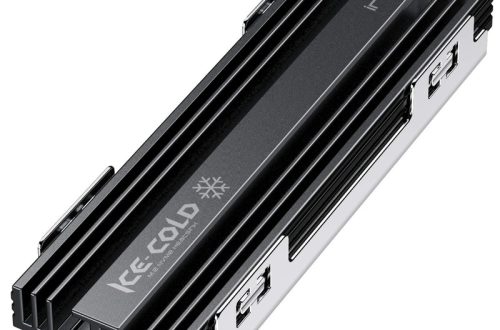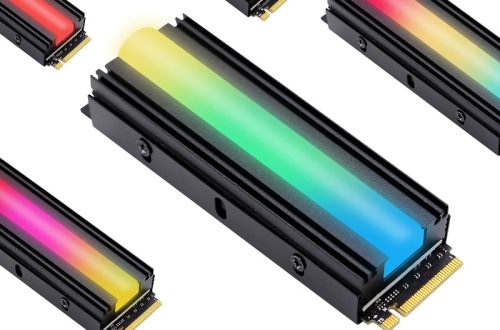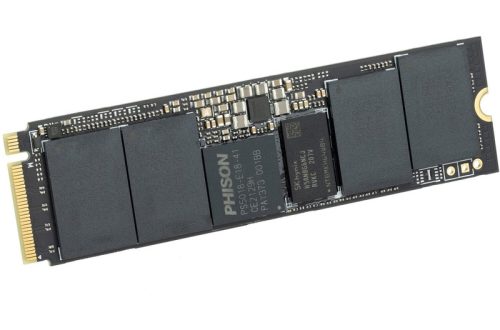Giving your computer a performance boost can be incredibly rewarding, especially when dealing with demanding tasks like video editing, gaming, or running scientific simulations. Upgrading your CPU (Central Processing Unit) is one of the most effective ways to achieve this. However, the process can seem intimidating, particularly for beginners. This guide will walk you through everything you need to know to upgrade your CPU with confidence, divided into four key parts:
Part 1: Planning and Compatibility
1. Assess Your Needs and Budget
Before embarking on the process of upgrading your CPU, it’s essential to establish a clear set of goals that you aim to achieve with the upgrade. Take the time to assess whether you are experiencing slowdowns in everyday tasks or if you require additional processing power for specific software applications. Understanding these requirements will play a crucial role in determining the appropriate CPU tier to target, whether it’s a budget-friendly option, a mainstream CPU, or a high-performance processor. For instance, if you primarily use your computer for general tasks or light multitasking, a budget or mainstream CPU might be sufficient. However, if you engage in resource-intensive tasks such as gaming, video editing, or 3D rendering, a high-performance CPU may be more suitable to meet your needs.

Alongside defining your upgrade goals, it’s essential to set a realistic budget for the entire upgrade process. This involves not only considering the cost of the CPU itself but also factoring in potentially necessary upgrades such as a new cooler to ensure effective heat management. By establishing a comprehensive budget, you can better plan for all associated costs and make informed decisions about component upgrades that align with your needs and financial constraints. This thoughtful approach will help you prioritize key components and make informed choices throughout the CPU upgrade process, ensuring that the outcome meets both your performance requirements and budgetary considerations.
2. Check CPU Compatibility
The crucial first step in the process of upgrading your CPU is to ensure compatibility between the new CPU and your existing motherboard. This is essential, as different CPU manufacturers, such as AMD and Intel, utilize distinct socket types for their processors. To initiate the compatibility check, it is imperative to conduct detailed research on your current motherboard’s model number to identify its compatible CPU socket.
You can typically find the model number of your motherboard printed on the board itself or within the user manual. Once you have obtained the model number, you can then proceed to locate the compatible CPU socket for your motherboard. For example, if you have an Intel-based motherboard, it might be equipped with an LGA1700 socket, while an AMD-based motherboard could feature an AM4 socket. By knowing the specific socket type supported by your motherboard, you can then focus on selecting a CPU that is compatible with this socket.
To facilitate this process, manufacturers’ websites and reputable PC parts vendors usually offer compatibility checkers where you can input your motherboard model number to browse a list of compatible CPUs. Utilizing these resources can simplify the task of identifying suitable CPU options for your motherboard, ultimately ensuring a seamless and successful CPU upgrade. Through thorough research and attention to compatibility details, you can confidently select a CPU that is fully compatible with your existing motherboard, thus laying the groundwork for a successful and efficient CPU upgrade.
Part 2: Gathering Tools and Materials
1. Essential Tools
When embarking on a CPU upgrade, having the right tools at your disposal is essential for a smooth and efficient process. A few basic tools are required to ensure that the upgrade can be performed effectively and without any hiccups. One of the primary tools you will need is a Phillips head screwdriver, which is indispensable for removing the computer case and various motherboard components during the upgrade process. This versatile and widely used tool will enable you to access and remove the necessary hardware components with ease.
Additionally, thermal paste is a crucial component that facilitates efficient heat transfer between the CPU and the cooler. While many newer CPU coolers come with pre-applied thermal paste, it’s advisable to have extra thermal paste on hand. This ensures that you have an additional supply in case you need to reapply or if the pre-applied paste is insufficient. Thermal paste plays a pivotal role in ensuring proper heat dissipation, making it an essential item to have when performing a CPU upgrade.
To prevent accidental electrostatic discharge (ESD) damage to sensitive components, it is recommended to use an anti-static wristband or an anti-static bag during the upgrade process. These measures are crucial for safeguarding delicate electronic components, such as the CPU and motherboard, from potential damage due to static electricity. Utilizing an anti-static wristband or bag helps to ground any built-up static charge on the body, preventing it from being discharged onto the sensitive computer components.
By ensuring that you have these essential tools and materials readily available, you can streamline the CPU upgrade process, minimize the risk of damage to sensitive components, and ultimately ensure a successful and hassle-free transition to a new CPU. These tools and materials are not only vital for the upgrade process but also contribute to the overall safety and efficiency of the CPU upgrade endeavor.

2. New CPU and Optional Thermal Paste
Once you have selected the CPU that aligns with your compatibility and performance needs, proceed with the purchase. When making your purchase, it is crucial to ensure that the chosen CPU is compatible with your existing motherboard. Review your motherboard’s specifications to verify that it supports the socket type and chipset required by the new CPU. Additionally, if your existing CPU cooler does not support the new CPU or is deemed insufficient for adequate cooling, factor in the cost of a new CPU cooler when making your purchase.
Selecting a compatible CPU cooler is essential to maintain optimal temperature levels and prevent overheating, which can significantly impact the performance and longevity of your new CPU. When choosing a CPU cooler, consider factors such as thermal dissipation capacity, noise levels, and compatibility with your computer case. After purchasing the CPU and compatible cooler, ensure that you carefully follow the installation instructions provided by the manufacturer to properly install and secure the new components.
By factoring in the need for a new CPU cooler and investing in a compatible, high-quality option, you can safeguard the performance and longevity of your new CPU while ensuring effective heat management, thus contributing to a stable and efficient computer system.
Part 3: The Upgrade Process
1. System Preparation and Disassembly
a. Backup and Power Down
Before starting, back up all your important data to an external drive. Then, safely shut down your computer and unplug it from the power source.
b. Accessing the Motherboard
Place your computer on a flat, stable surface with good lighting. Open the case by removing the side panels according to your case’s manual. Locate the CPU cooler, typically secured with metal brackets or screws. Carefully detach the cooler, paying attention to any cables connected to its fans.
2. CPU Removal and Installation
a. Removing the Old CPU
Most motherboards have a lever mechanism to unlock the CPU socket. Locate the lever and gently release it, allowing the CPU to be lifted from its socket. Clean the old thermal paste from the CPU and motherboard using a lint-free cloth and rubbing alcohol (ensure the computer is off and unplugged).
b. Installing the New CPU
Apply a small, pea-sized amount of thermal paste to the center of the new CPU’s integrated heat spreader (IHS). Carefully place the CPU into the socket, aligning the notches with the socket’s indentations. Secure the CPU by gently lowering the lever mechanism.

Part 4: Reassembly and Testing
1. Reassembling the System
a. Cooler Installation
Reapply thermal paste to your cooler (if needed) following the manufacturer’s instructions. Reattach the cooler to the motherboard according to the manual, ensuring proper alignment and secure attachment. Reconnect any fan cables to the motherboard’s designated headers.
b. Final Touches
Carefully reconnect all cables previously disconnected during disassembly, including power supply cables, data cables, and front panel connectors. Double-check all connections for secure attachment. Close the computer case and secure the side panels.
2. Testing and BIOS Update
a. Power On and Initial Boot
Plug your computer back into power and turn it on. The system may take a few moments to boot for the first time with the new CPU. Keep an eye out for any error messages or unusual behavior.
b. BIOS Update (Optional)
Modern motherboards may require a BIOS update to ensure optimal performance and compatibility with the new CPU. Consult your motherboard’s manual for instructions on updating the BIOS. It’s crucial to follow the manufacturer’s instructions precisely to avoid potential problems.




